Coarse fish are species which you would not normally eat, such as carp, pike or barbel. In the UK, any fish which isn’t salmon, or trout is usually a coarse fish. This post lists 15 different types of coarse fish found in the river Wandle in South London.

Types of Coarse Fish Species
You can use the fin diagram below to help you to identify the different fins mentioned in this post.
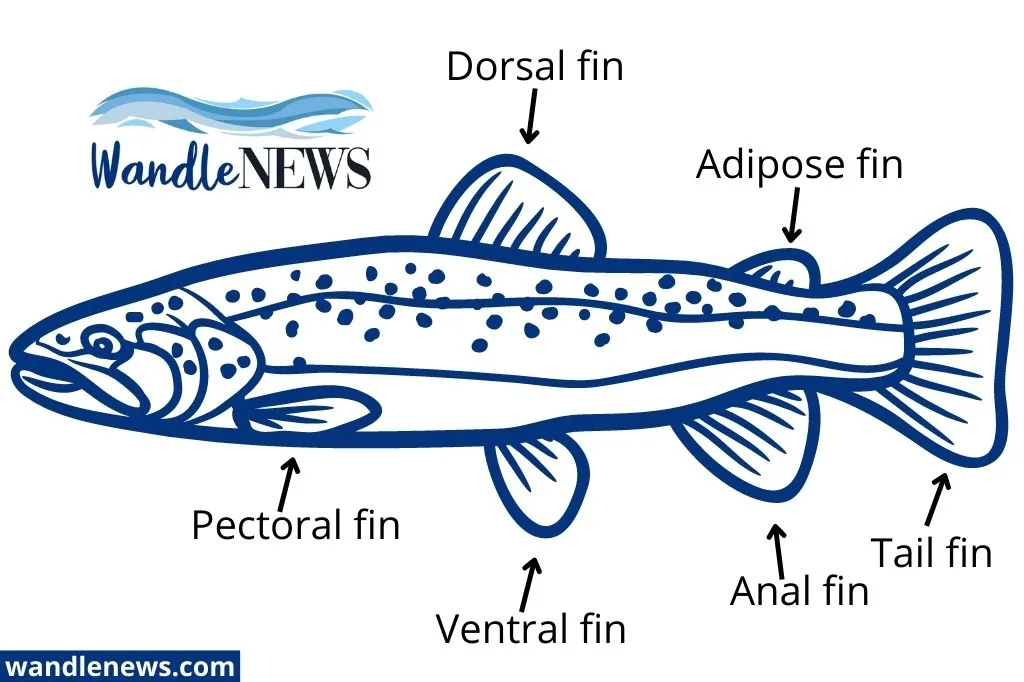
Thank you to the Wandle Anglers who shared their photographs of coarse fish caught on the river Wandle
15 Types of Coarse Fish Found in the River Wandle
1. Carp
Carp are very common fish in the UK, and found in most rivers. They are very adaptable fish, and will thrive in almost any freshwater environment.
You can find many different types of carp including common carp, mirror carp, koi carp, leather carp, grass carp, crucian carp, linear carp, and ghost carp. They all originate from common goldfish.
Carp were originally introduced to the UK by monks in the 13th century, who brought them here for food. Below are some different types of carp found in the river Wandle.
Fishing tip: Carp fishing at night produces the best catches. Carp also have sensitive taste and smell receptors, which means they avoid baits they have been caught on previously. Experiment with different combinations of scents and ingredients to see what works.
Common Carp
Common carp (cyprinus carpio) are classified into three categories: common, mirror and leather.
The common carp has scales on its body but not its head. They don’t have teeth, but they do have barbels on each side of their mouth. They are normally a green to golden brown colour, with a cream belly.
The common carp below was caught by Maf Arnold on the River Wandle. Common carp have concave dorsal fins, but sometimes they are hard to see. You can see in the photograph below the fish has a dark greenish brown back, and cream underside.

The common carp shown in the photograph below was caught by Neil Curtis on the River Wandle. You can see that it has scales on its body but not its head.
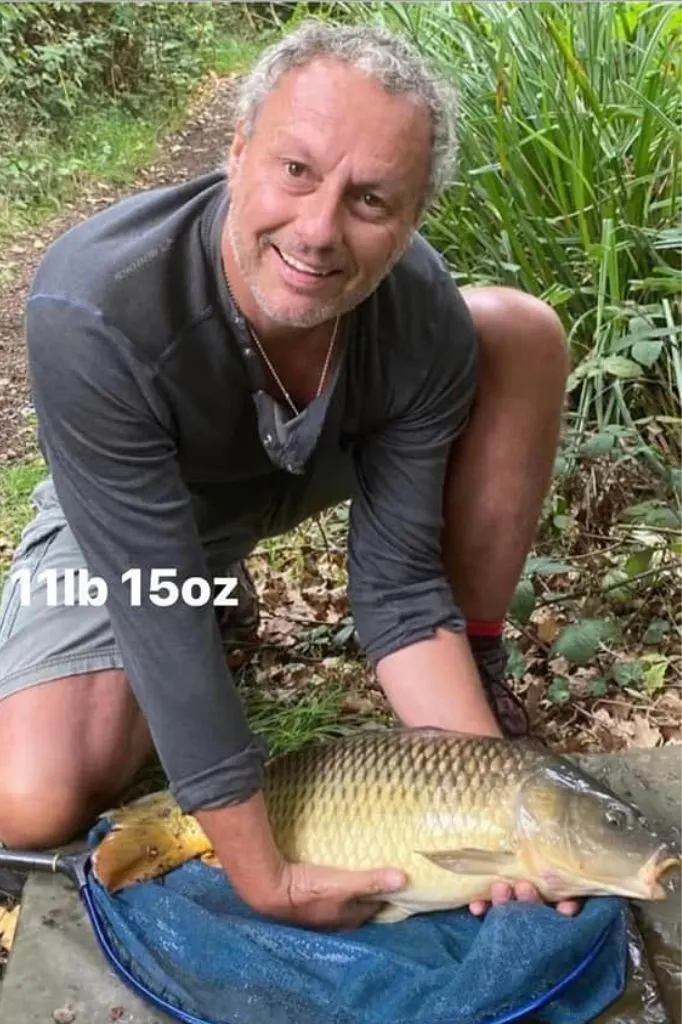
The carps below were caught by Luke Stoneman and Lee Friend on the river Wandle. You can see that carp have long dorsal fins, and some of them have dark brown bodies.

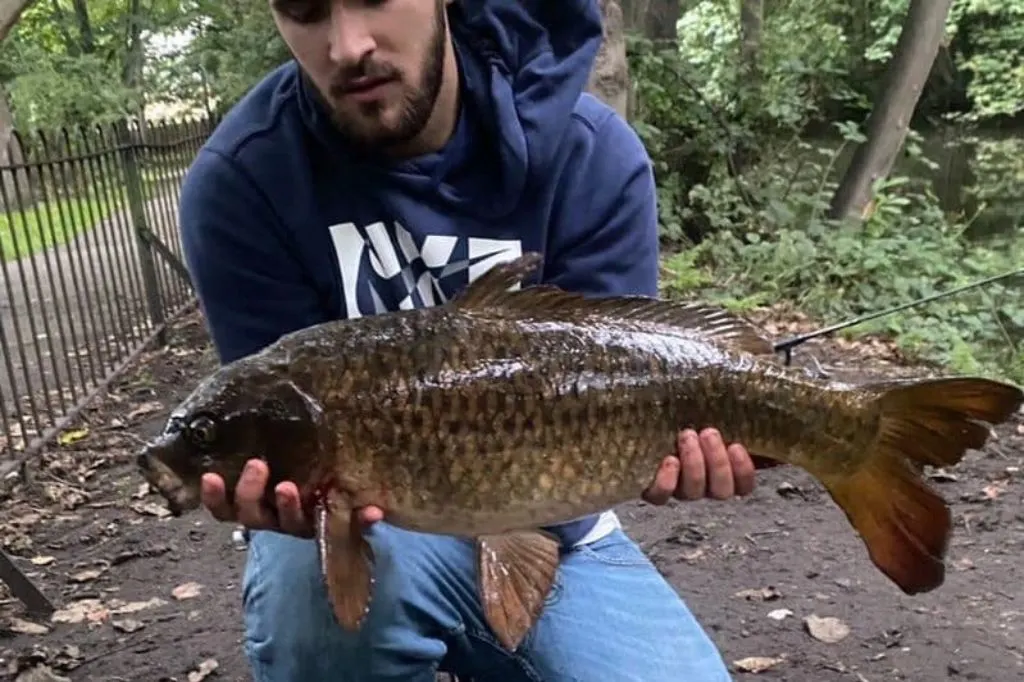
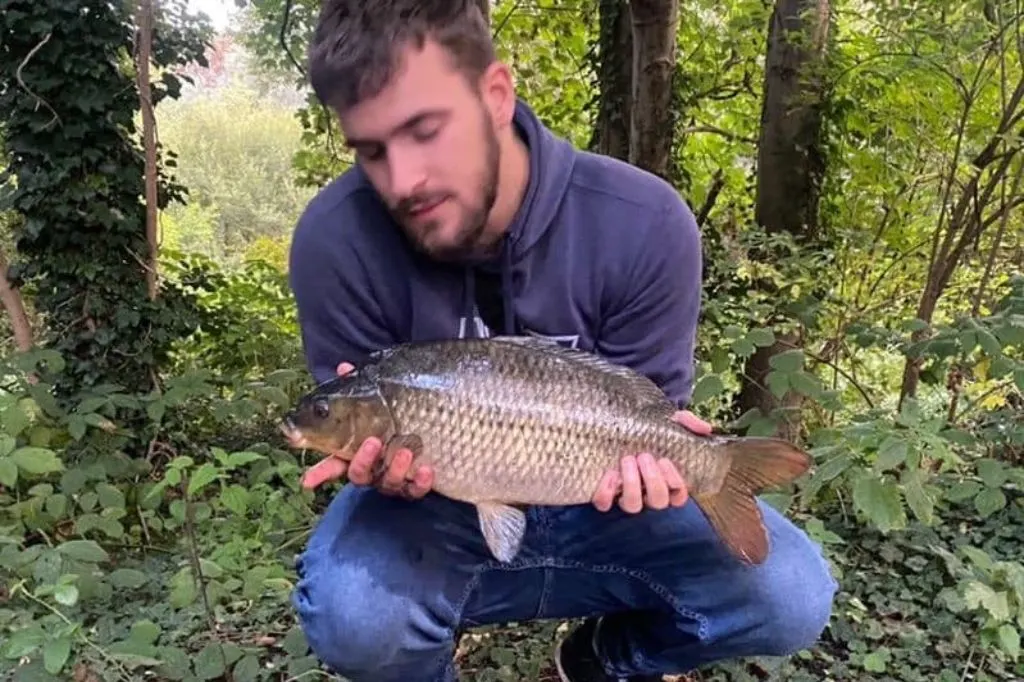
Mirror Carp
Mirror carp are a variety of common carp, but unlike the common carp they have much larger scales which are in an irregular pattern. They usually have a more rounded and stocky body compared to other types of carp, and their colour ranges from pale yellow to dark gold.
The huge mirror carps below were caught by Luke Stoneman on the river Wandle.
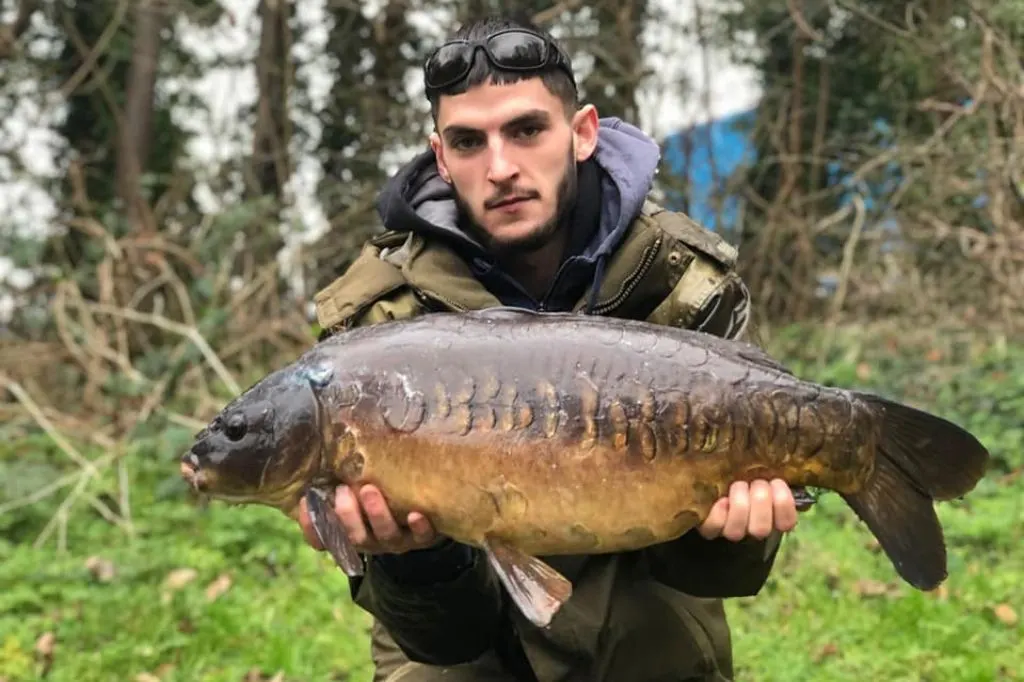
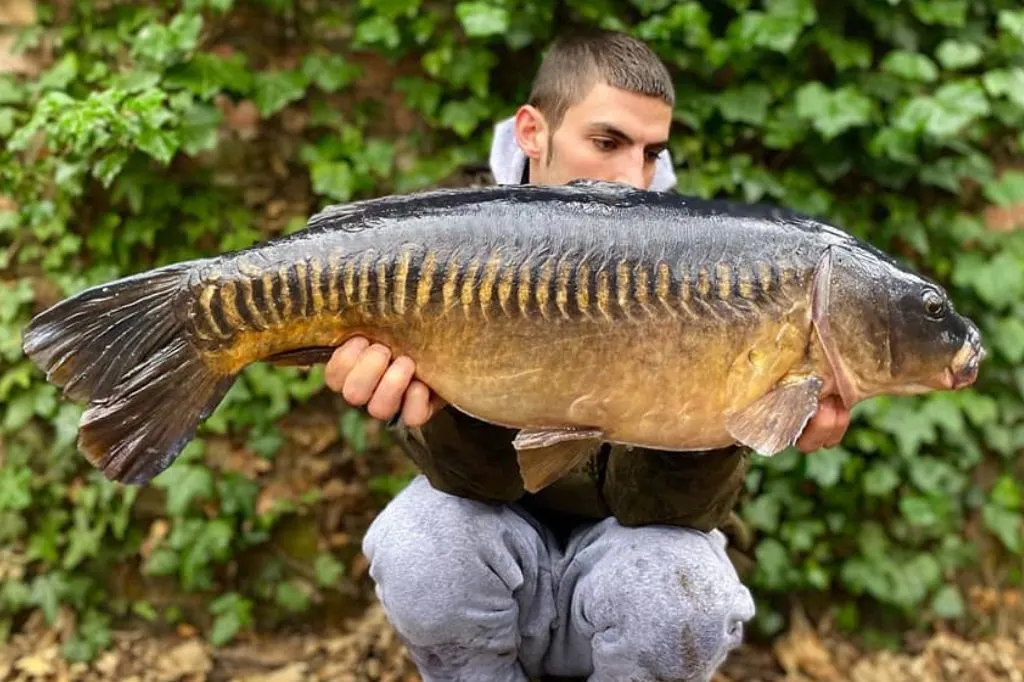
The mirror carps below were caught by Daniel Holland and Jonathan Milton on the river Wandle. You can see from the pictures that these fish have round bodies, and big nonuniform scales.
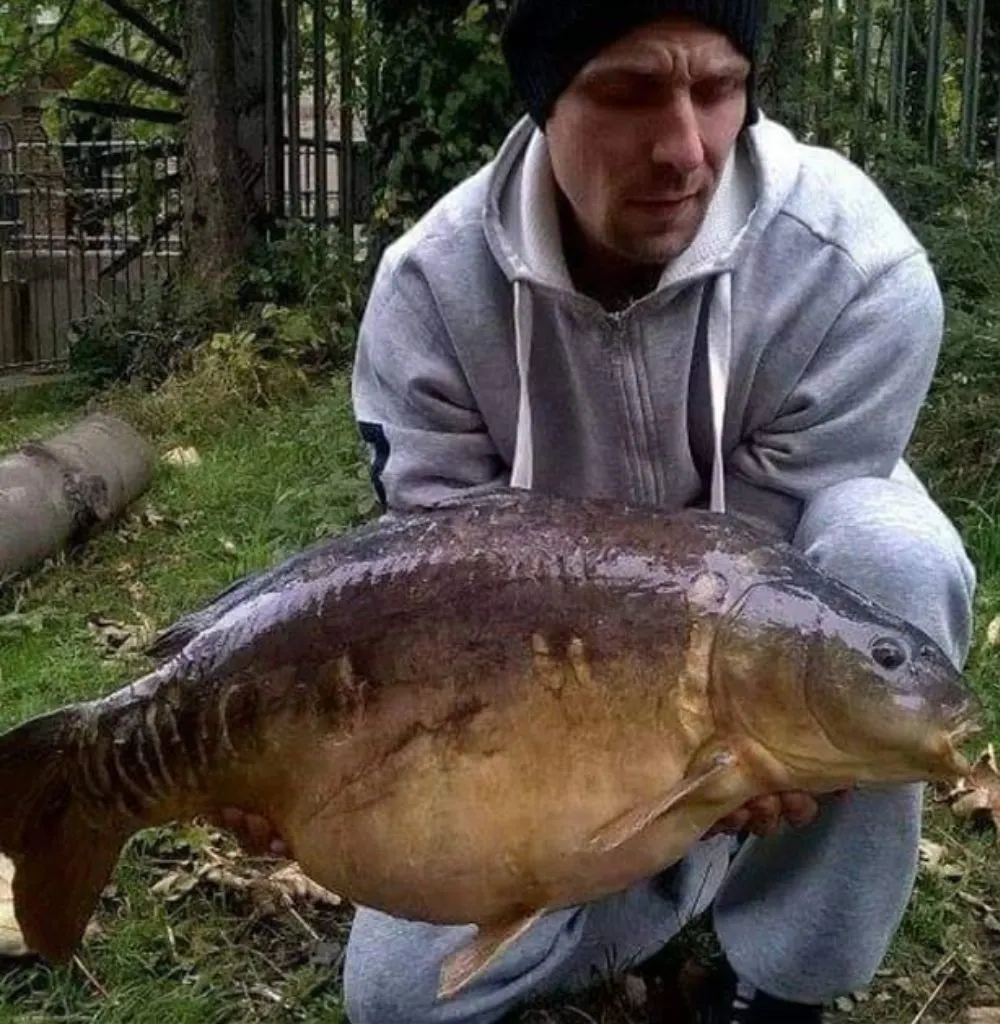
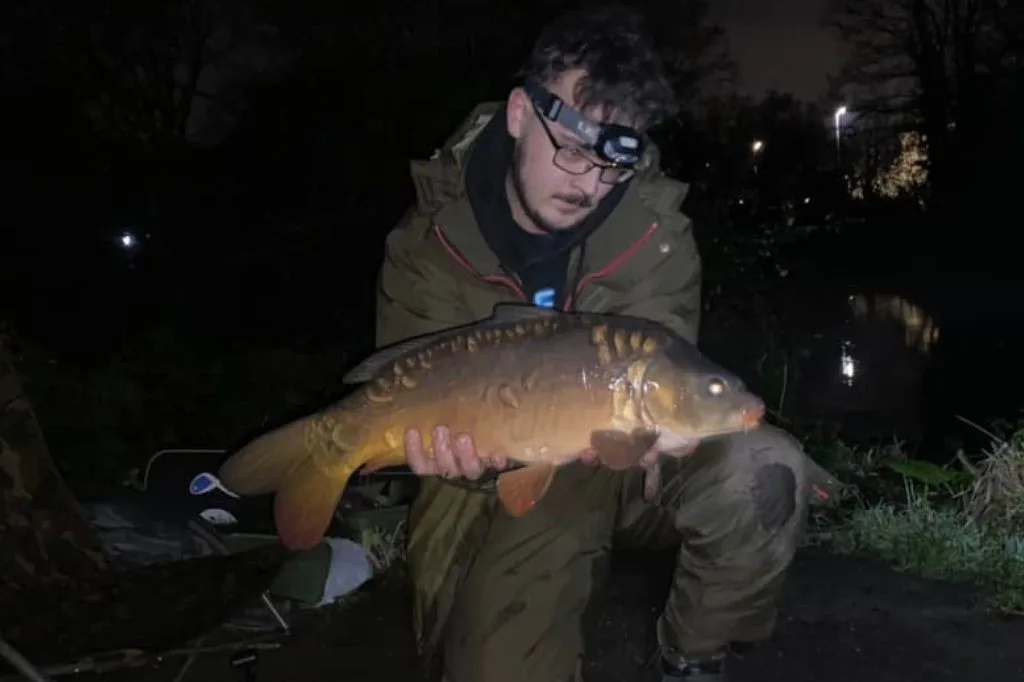
Ghost Carp
Ghost carp (also known as Ghost Koi) are a hybrid, and are the result of breeding Mirror or Common Carp with Purachina Koi. They come in a wide variation of colours from white to grey. Often they have a metallic shine, yellow scales or a ghost white appearance.
The ghost carp below was caught by Buster Keefe on the river Wandle.
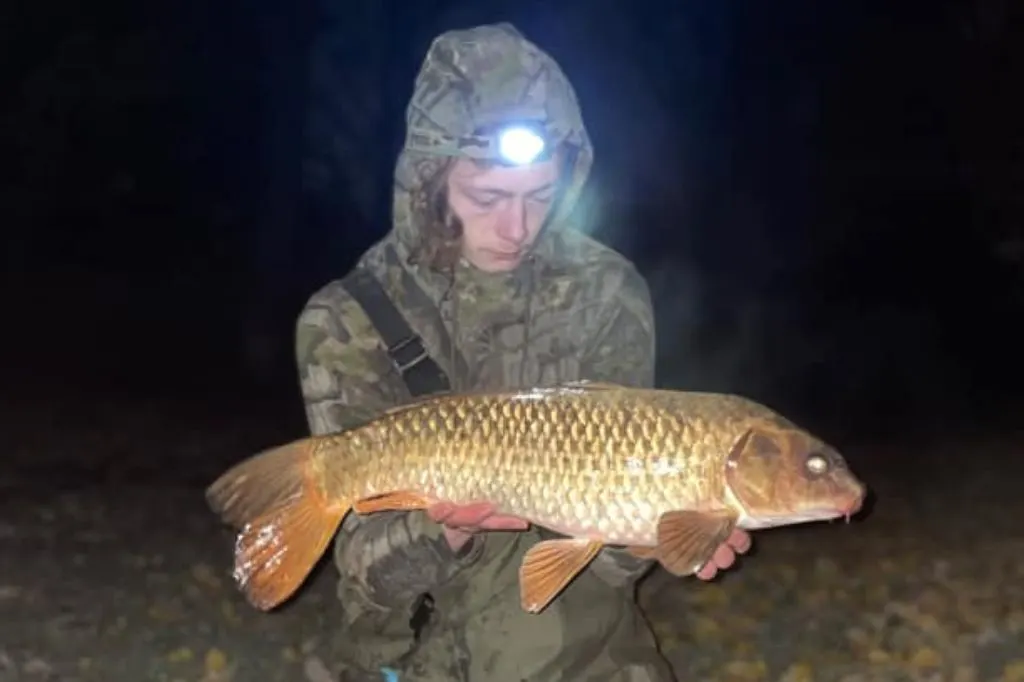

Koi Carp
Different varieties of koi carp are distinguished by their colouring, and they range from grey to brightly coloured. The word “koi” means “carp in Japanese, and these fish are often kept for decorative reasons in koi ponds.
The koi carp below was caught on the river Wandle by Liam Cook. You can see it has a bright orange body.
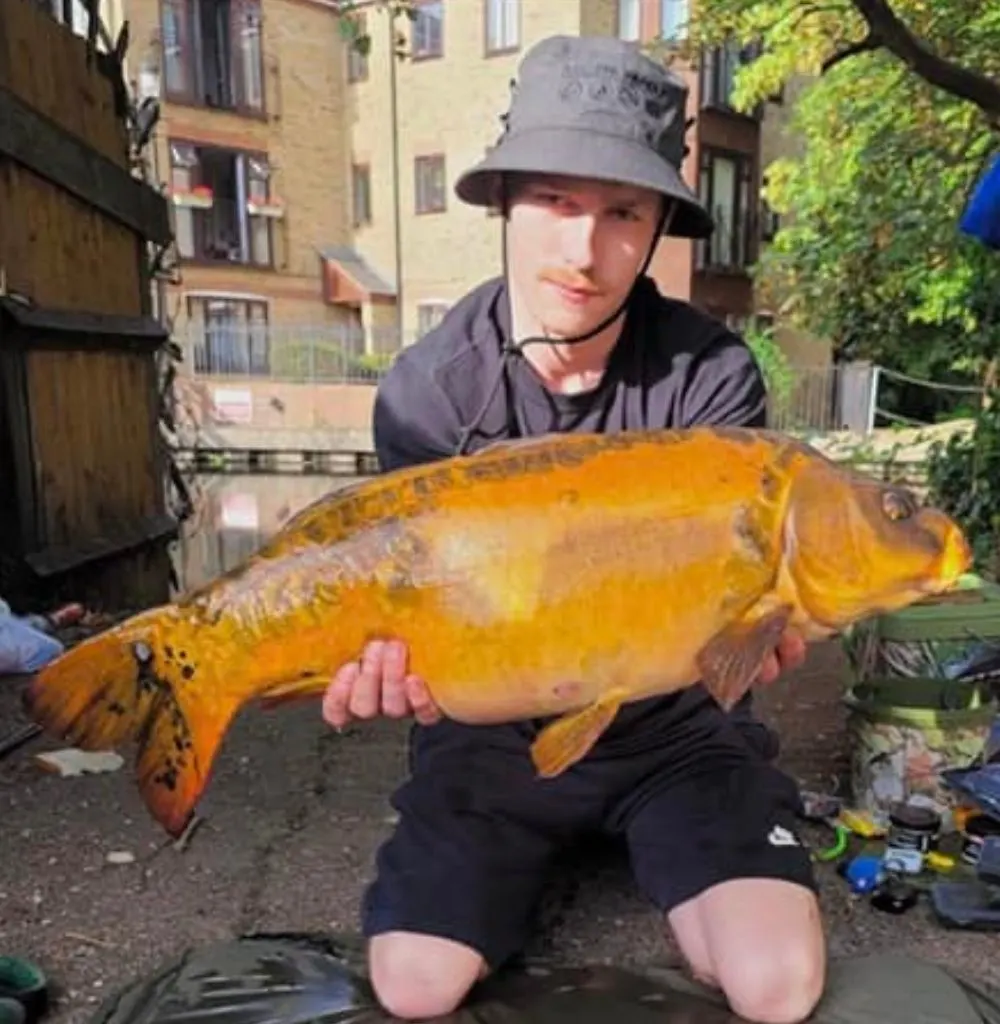

2. Barbel
Barbels have long bodies and a pointed head. Their lips are thick, and they have two pairs of barbels. The body of a barbel is usually an olive green colour or dark grey, with a white belly.
These fish are bottom feeders, so they stay close to the river bed and search for food, like small crustaceans, in the mud. They like fast flowing, clean rivers.
The barbel in the photograph below was caught by Charly Mills on the river Wandle. You can see in the picture that the pectoral fins, anal fins and pelvic fins all have a bit of orange on them.

The beautiful fish below was caught by Mark Anthony Cook on the river Wandle. You can see the body of the barbel is an olive green, and it has quite small scales that are firmly embedded in the skin.
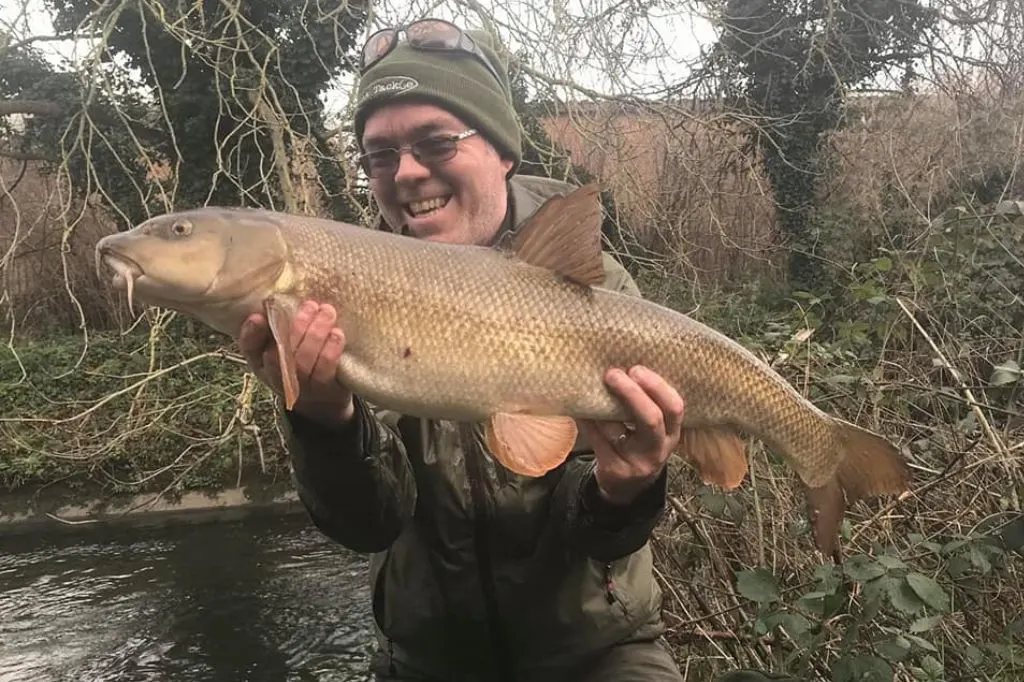
The river Wandle is a good place to fish for barbel, especially along Wandle Bank, or in Earlsfield. Below are some photographs of barbel that were caught by anglers on the river Wandle.

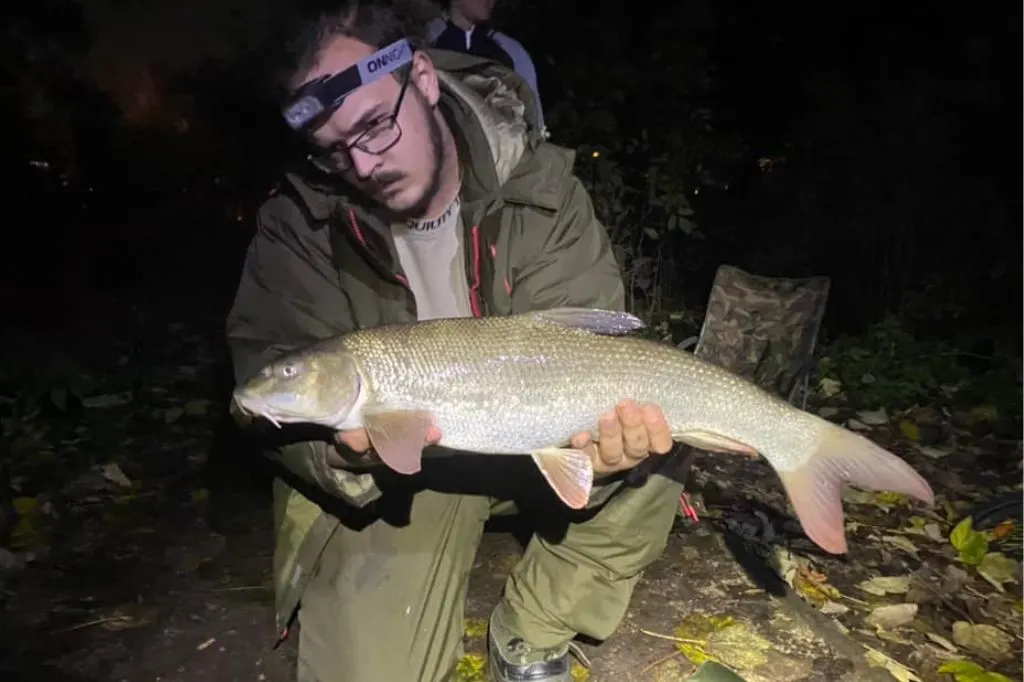
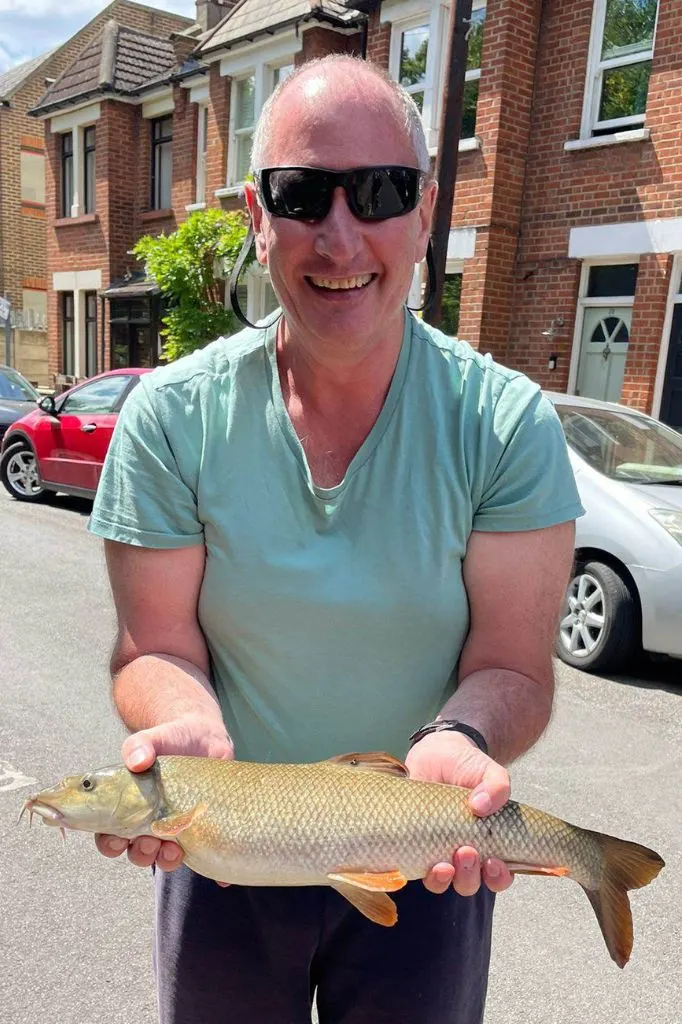
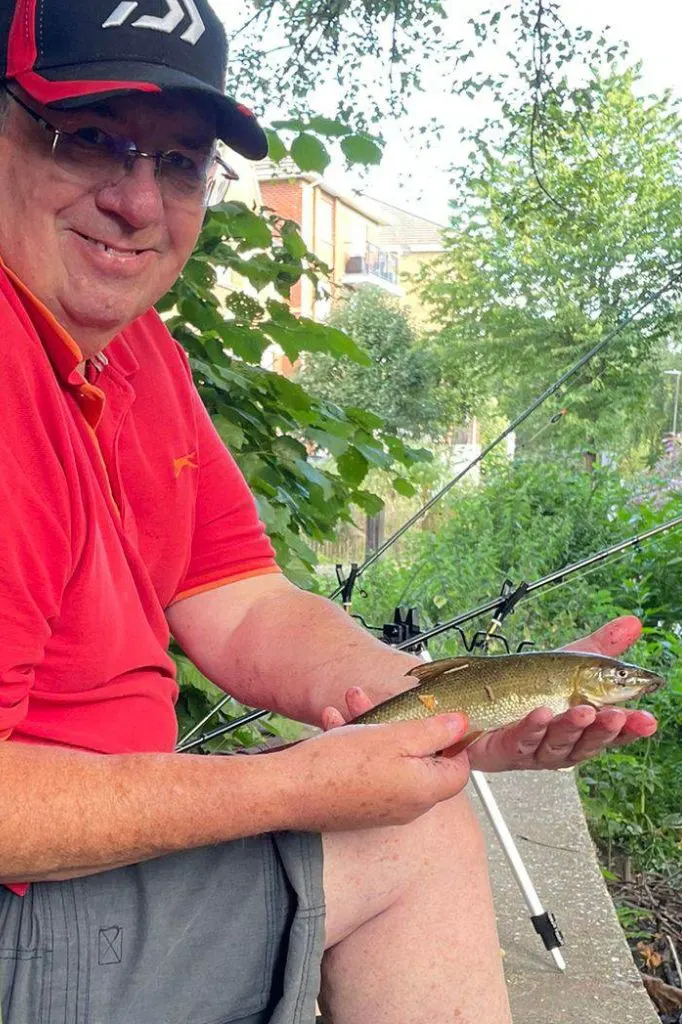
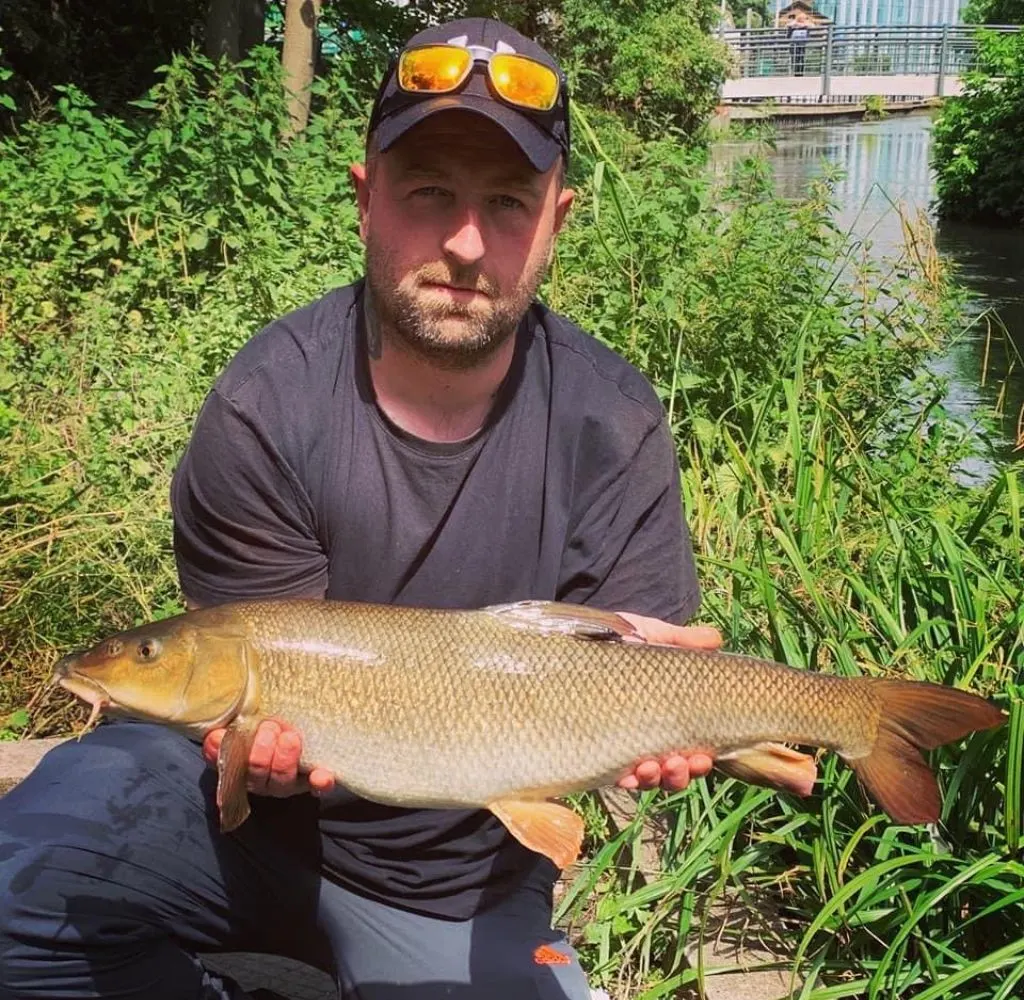


Related: 5 Best Spots for Barbel Fishing on River Wandle
3. Chub
Chub are popular with coarse anglers since they are easy to catch, in almost any conditions. These fish are dark grey or brown and have brass colours on their sides. They have dark grey tail fins and dorsal fins, and orange pelvic and pectoral fins.
The chub below was caught by Audrius Stukas on the river Wandle. You can clearly see the orange pelvic and pectoral fins, and dark dorsal and tail fins.

If you are fishing for chub you should be careful when you remove the hook, as these fish have sharp teeth at the back of their mouths.
The chub below were caught on the Wandle by Michael Kerridge, Mark Anthony Cook, and Alfie Smith.


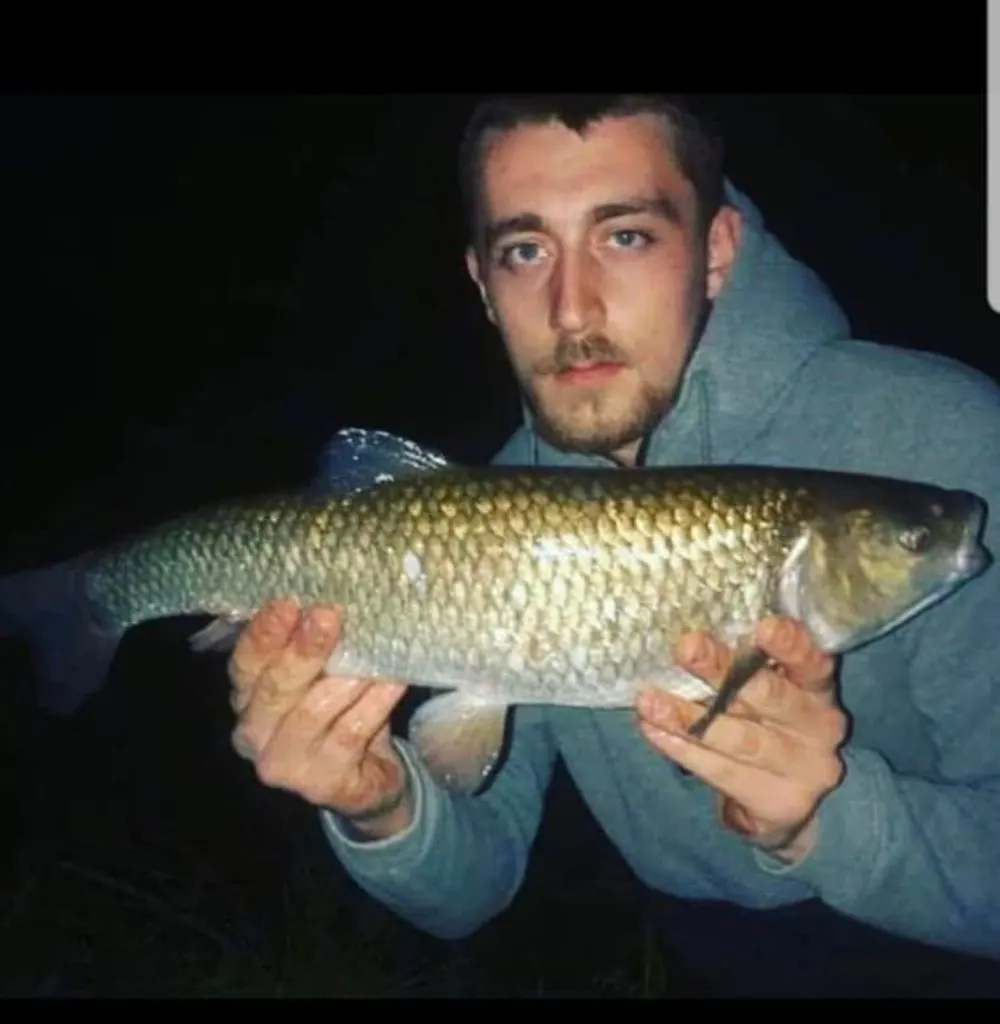
4. Perch
Perch are easy to recognise because they have two dorsal fins, and a flat body which is usually a grey or olive colour. They also have vertical stripes on their backs, and bright orange pelvic fins.
Perch are shoal fish, and tend to move in groups when they are small. Larger perch on the other hand are often found alone, as anything small that swims near them gets eaten. If you are catching lots of small fish like roach, dace or bleak, you might find a big perch nearby.
The perch below was caught by Neil Curtis on the river Wandle.

5. Gudgeon
A gudgeon is a smaller fish, with a slender body, curved back, and large head. It has quite large scales on its body, and short dorsal and anal fins. Its head and throat are scaleless.
Gudgeons like gravel river beds and clear water. They are always found in shoals, and are quite adaptable compared to other river fish.
The beautiful gudgeon below was caught by Audrius Stukas on the River Wandle.
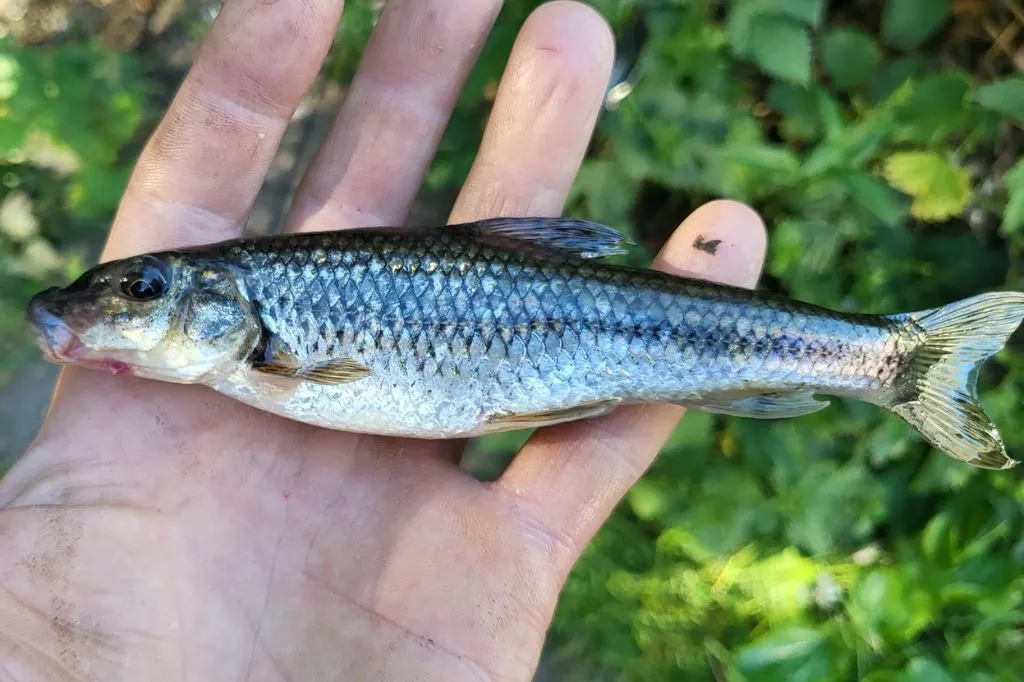
6. Tench
Tench are one of the most beautiful freshwater fish, with their distinctive shape and colour. They have short, thick bodies with tiny scales, and a very short pair of barbules. Their bodies are normally olive or tawny green, and covered in a layer of slime.
Tench were once known as “doctor fish” and it was believed that other fish would rub against the slime on their bodies to heal any injuries. You can also get ornamental types of tench that are bred for ponds, and come in bright gold, orange or yellow colours.
The tench in the photograph below was caught by Lee Friend on the river Wandle.

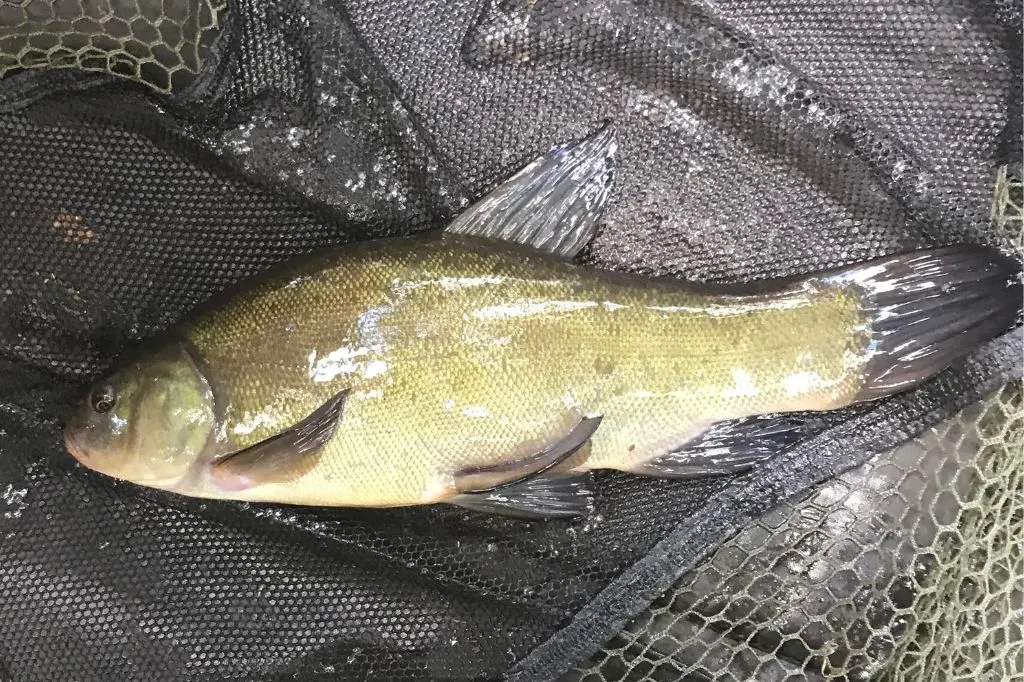

7. Roach
Roach are members of the carp family, and have large silver scales, red or orange eyes and red lower fins. They are one of the most common fish found in UK waters, and are able to tolerate the pollutant levels in our rivers.
Roach are normally found in shoals, and will feed in all all kinds of conditions both in summer and winter. They are a popular fish for both the beginner to coarse fishing, as well as the specimen hunter looking for large solitary fish.
The lovely roach below was caught by James Roberts on the river Wandle. You can clearly see its bright orange lower fins, and orange eye.
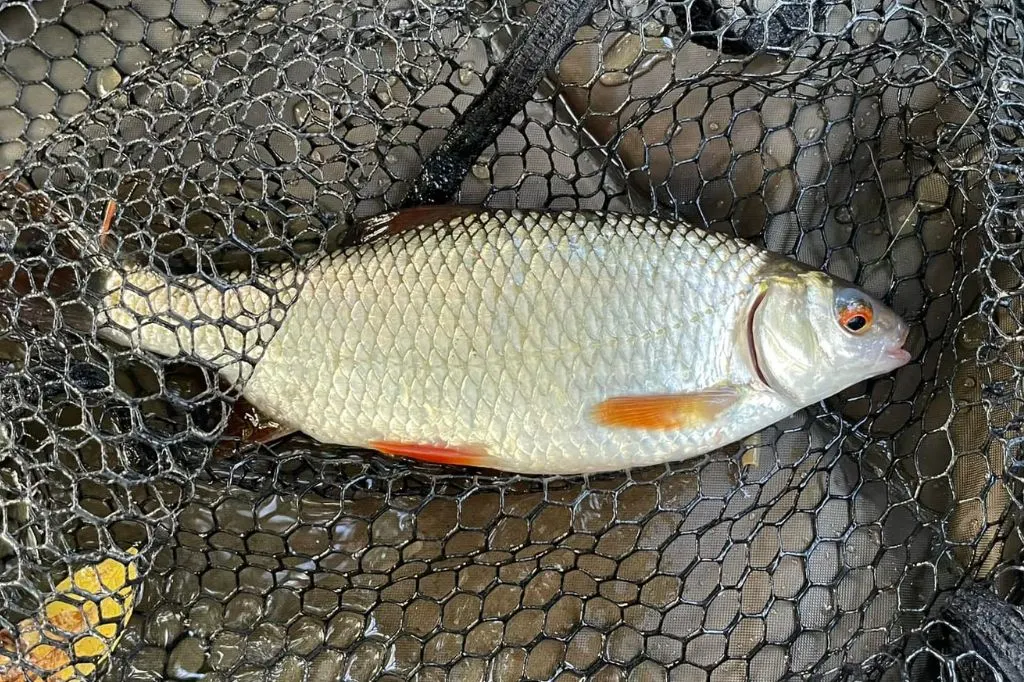
Roach normally have a dark back, with silver sides and a white belly. The fish below was caught by Adrian Marshall on the river Wandle. You can see the colour changes from dark grey on its back to white on its underside.
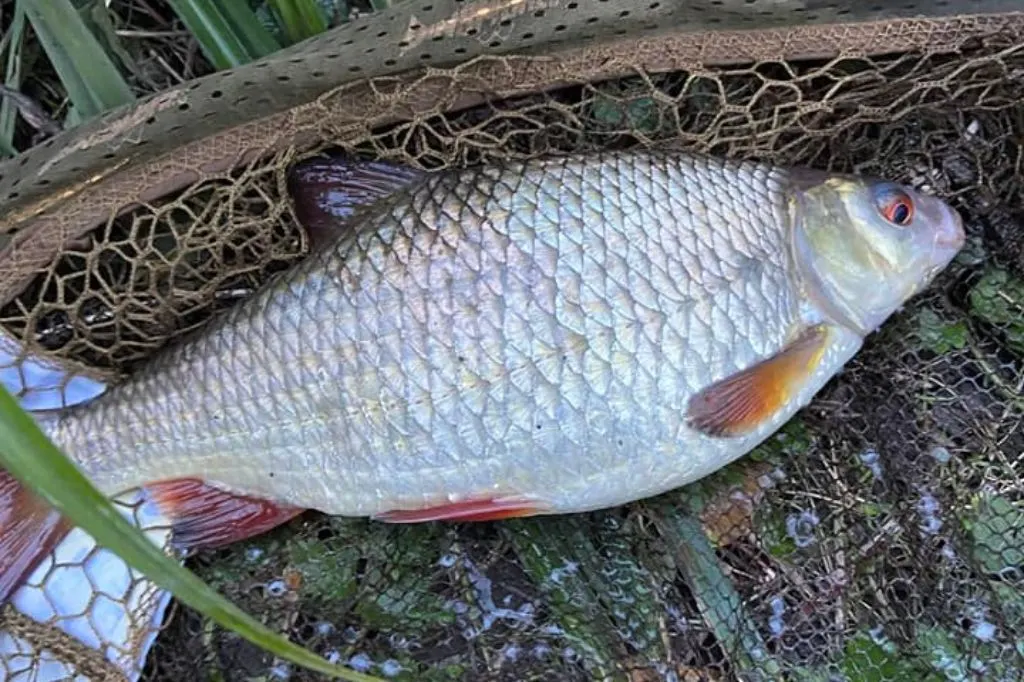
Some older roach have a gold tinge on their bodies. You can see this colouration in the photograph of the roach below, which was caught by Terry Molloy.
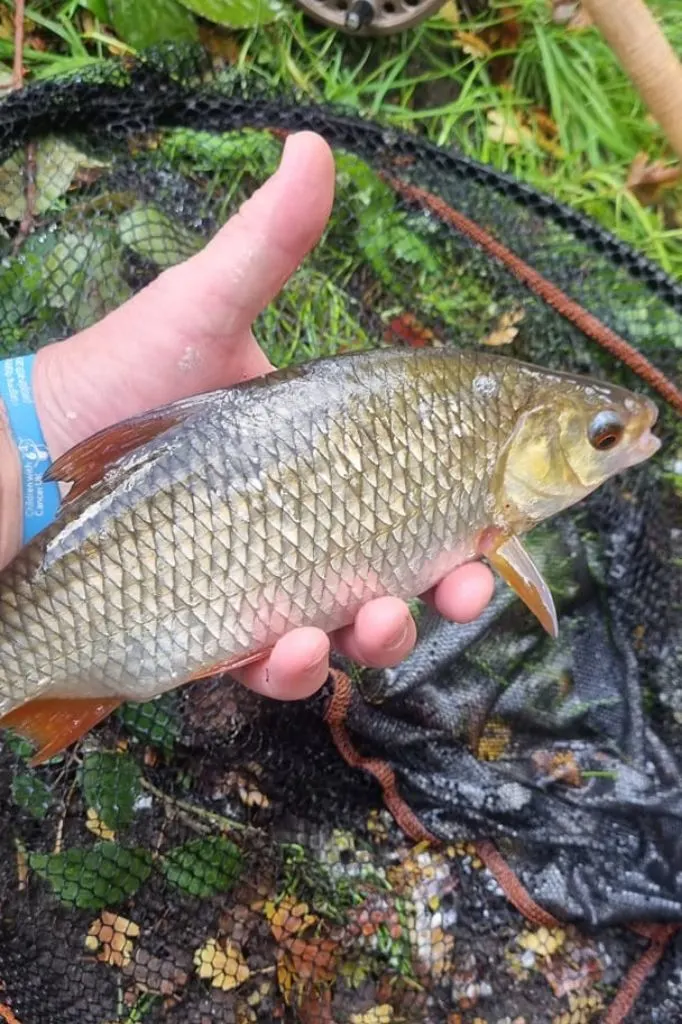
Roach caught by Terry Molloy on the river Wandle
8. Rudd
Roach and Rudd are often confused with each other, as they are a similar shape and size. You can tell them apart however from their fin colours. Both fish have an orange eye, and can have silvery bodies, but the Rudd has much redder fins.
You can see from the photograph below that the Rudd has a dark red tail and fins. There are a few rudds in the river Wandle, but they are not as common as other types of coarse fish. The rudd in the photograph below was caught by Neil Curtis.

9. Eel
Eels are common fish found in most waterways. They have bodies like snakes, and large, pointed heads. Their dorsal fins are usually continuous with their anal fin and caudal fin. Usually they are yellowish brown, but their colour varies and can be olive green.
If you want to catch an eel, the best bait is prawns, fish, or whole lob worm. Eels have a good sense of smell, so try adding fish essence to your bait. The eel in the photograph below was caught by Lee Friend on the river Wandle.

The green coloured eel below was spotted and filmed by Liam Cook.
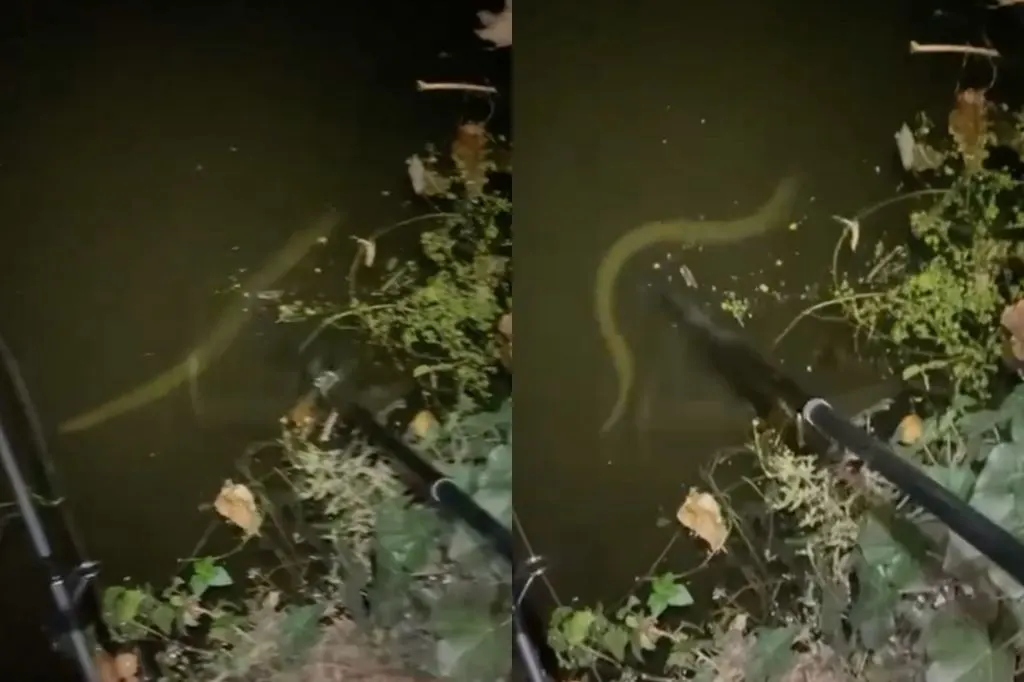
10. Dace
Dace are occasionally mistaken for being a small chub, but they can be identified by their concave anal fin. They like clear streams with gravel at the bottom, and deep, still water.
The best way to catch a dace is with a stick float, and a small bait such as maggot or castor. Dace are shoal fish and need steady, constant feeding, otherwise they will loose interest.
The dace below was caught by Neil Curtis on the river Wandle.

11. Ruffe
Ruffe have bodies that are a similar shape to a perch, with two dorsal fins. Their forward fin, protrudes and has spiny rays, their rear fin has soft rays, and their anal fin has spines. These fish feel very slimy when handled.
Although they are small fish, Ruffe are very aggressive. During the day they will be found in deep water, but at night they move to shallow waters to feed. They will feed in darkness, cold temperatures, and turbid conditions.
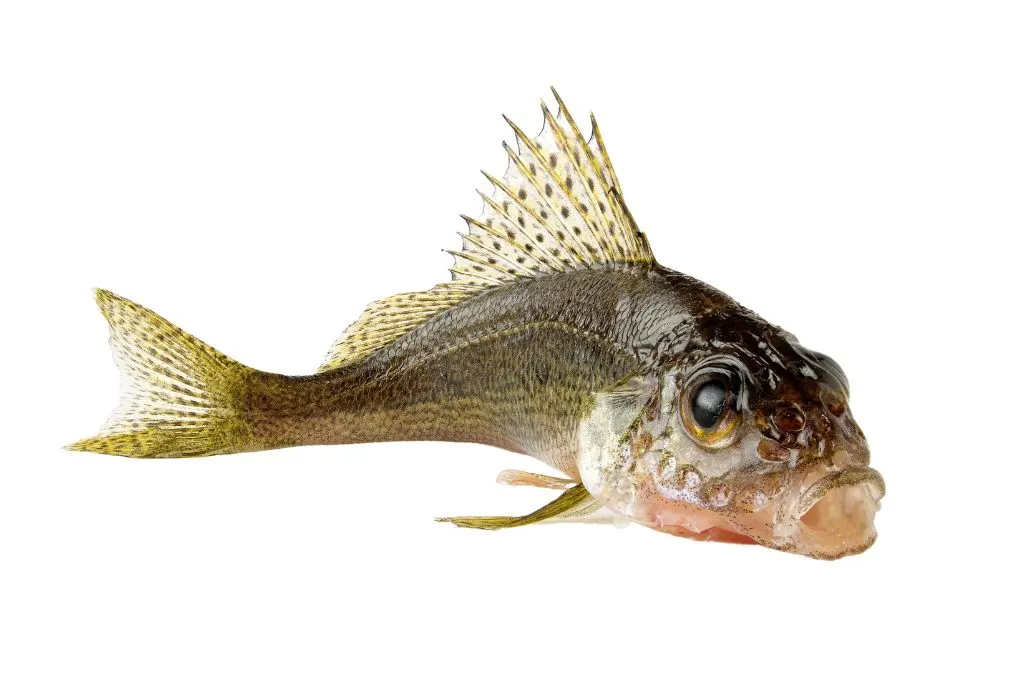
12. Orfe / Ide
The Golden Orfe is also known as the Ide. It usually has a silvery appearance, with red fins. They eat insects, crustaceans, molluscs and small fish. They are quite plump and sturdy fish, with yellow eyes.
If you want to try and catch a bigger orfe, try using red worm on the hook, just under the surface. These fish are surface feeders, so use floating castors as an attractor.
The Golden Orfe below was found in the river Wandle. The photograph was taken by Lee Friend.
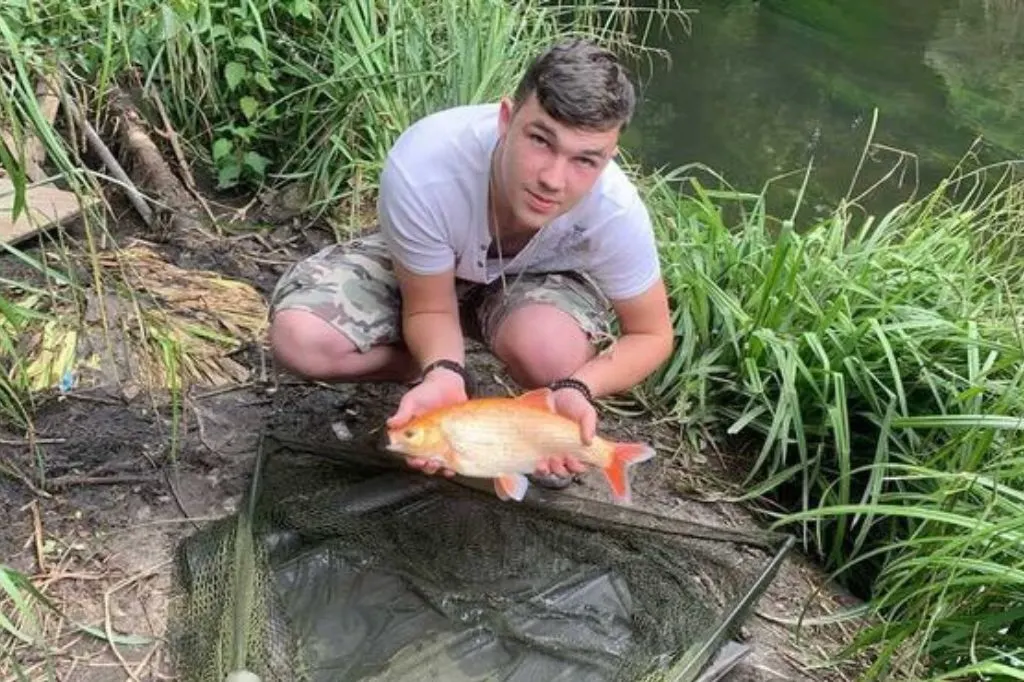
13. Common Bream
The common bream has a deep, narrow body and forked tail fin. It is a well scaled fish, but also very slimy. They can be green / brown, slate or even black coloured.
Bream are very rare on the Wandle, and few have ever been caught. The bream in the photograph below was caught by Neil Curtis. You can see the fish has a long anal fin, which goes from just past the mid point of its belly to almost the tail.

14. Bullhead
Bullheads are small fish which rarely grow longer than 15cm. They have very large heads, which can make up 25% of their body length, and extremely large pectoral fins.
Bullheads have quite unusual eyes as they have a double cornea, with a fluid-filled space in between. This helps to protect the eyes from particles in the water.
The bullhead in the photograph below was caught by Neil Curtis on the river Wandle.
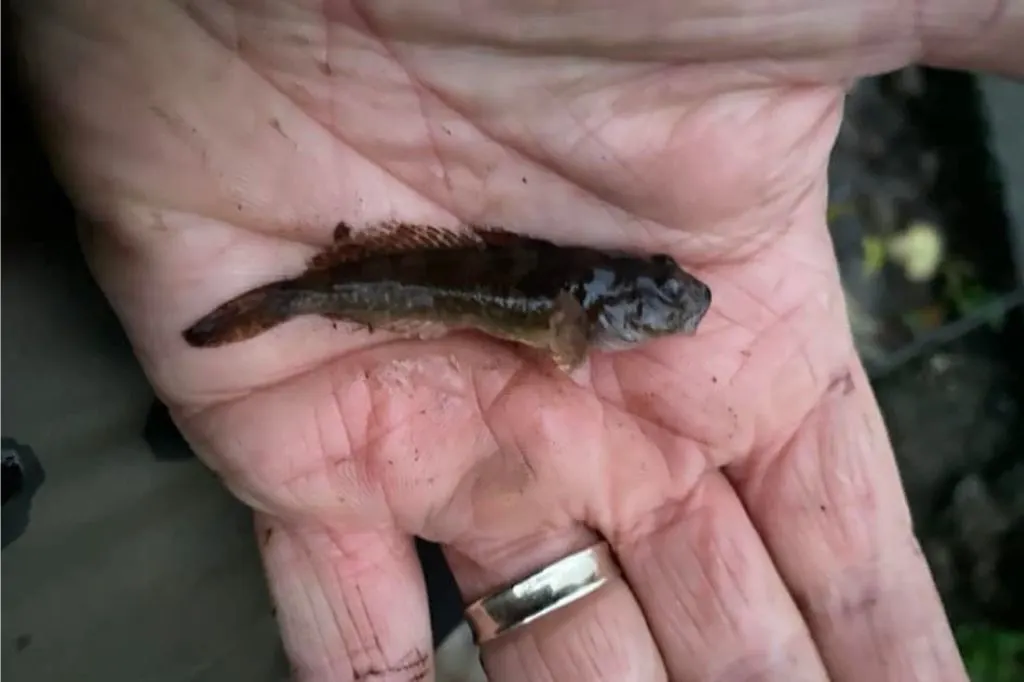
15. Minnow
A minnow is the smallest member of the carp family, and rarely grow more than 10cm in length. They like clean, well oxygenated water. Predators such as perch, brown trout, chub and salmon all thrive on them, which is why they make good bait.
The minnow in the photograph below was caught by Graham King on the river Wandle.

Other Types of Coarse Fish Found in UK Rivers
The coarse fish listed below have not been found in the river Wandle, but live in other UK rivers:
- Silver Bream
- Wels Catfish
- Northern Pike
- Zander
- Grayling
- Bleak
- Stone Loach
If you have found one of these fish, or any other type of coarse fish in the river Wandle, then please get in touch and I will update this post.
Wels catfish are actually an invasive species, and it is illegal to put them into the river Wandle as they are predators which can upset the ecology of the river. A couple years ago there was a report, and video of someone adding one to the Wandle, which resulted in the Environment Agency searching the river.
The pike in the photograph below was caught on the river Mole by Lee Friend.

When Can You Fish for Different Types of Coarse Fish?
If you want to fish for species of coarse fish, you will need to have a rod licence.
The rod fishing byelaws for the South East, which state when you can fish, are published on the Environment Agency website. The close season for coarse fish is from 15 March to 15 June.
Useful Fishing Posts
Below are a list of posts you may find helpful if you are fishing on the Wandle, or other rivers in the UK.
- Complete Guide to Fishing on the River Wandle
- How Fish are Affected by the Moon Phase
- What is a Fishing Leader, and Do You Need One?
This post was About Types of Coarse Fish Found in the River Wandle
Thank you for reading my post about the different types of coarse fish found in the river Wandle, and other UK rivers. If you have found any coarse species not mentioned in this post, please leave a comment below or contact me at [email protected]

Brian Phillips
Saturday 4th of November 2023
I think your article about the River Wandle is brilliant, I was surprised that there was no advice about the return of all fish . As a Trout fisherman it is important to return all fish caught for survival of the species, they should be returned with care as they fight hard and need time to recover so need some TLC please do not throw them back or put aa keep net as they will possibly die ,coarse fish are more robust and will stand a little rough handling as with being on show for a photo for a proud angler.
Olivia Herlihy
Thursday 9th of November 2023
Hi Brian, Thanks for your comment, and kind words about my article. On my main fishing article I have talked about catch and release but I should probably add something about it to this one too. I want to look after our precious Wandle fish. :-). Olivia
Brian Phillips
Saturday 4th of November 2023
Has there ever been or is there any Grayling in the river system
Olivia Herlihy
Friday 10th of November 2023
Yes, there used to be Grayling in the Wandle many years ago, but they need high water quality to survive, and sadly due to pollution they have died over time.
jack smith
Sunday 7th of May 2023
I have never ever seen a pike in the river wandle or heard of any being caught, would it be possible to put some in there ?
Teresa
Sunday 5th of February 2023
Loved your photos showing the great variety of fish caught in the Wandle ,also the size of so many of them. Incredible Can see why those fisherman look happy and proud of their catches.